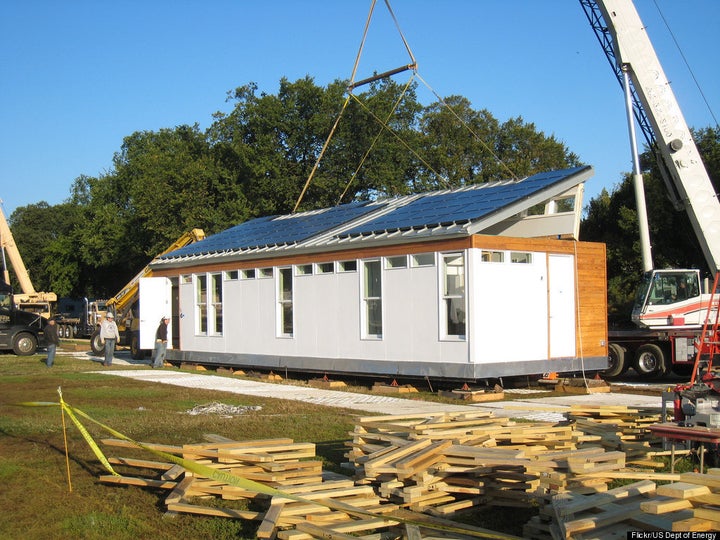
From Associated Content, by Eric Brennan
Using the right materials in your home can help preserve the environment and save you money in the long run.
Whether you're building a new home from the ground up, or remodeling an existing structure, using energy-efficient building materials can save you hundreds, even thousands of dollars, not only in energy savings, but also in tax incentives, grants and rebates.
According to the U.S. Department of Energy, more than $2.6 billion in grants is available to state and local governments under the Energy Efficiency and Conservation Block Grants (EECBG) program. Because of this $2.6 billion cash injection, many people are now able to afford energy-efficient building materials for new homes and existing structures.
With so many energy-efficient building materials on the market, where do you begin? Just as a home is built, you start from the ground up with the foundation. At SouthFace.org, you will find links to federal grants, LEED certifications and an energy-efficient checklist for your home that can give you a great starting point for installing energy-efficient building materials in your home.
Foundation. If you have a crawl space under your home, energy loss through outside air vents can really add up. By installing a crawl space vapor barrier, you can close off your crawl space, allowing your heating and cooling ducts to work more efficiently. This plastic vapor barrier installed with a crawlspace door and dehumidifier can also stop mold, mildew, rodents and energy loss. Find out more about sealing your crawl space at SealCrawlSpace.com.
Sheathing. Plywood, OSB and paneled siding are typical structural coverings used for roofs, walls and floors. These products are made from veneers of wood, oriented strand and pressed pulp. Thermostat OSB Radiant Barrier Sheathing is a radiant barrier roof sheathing that takes a conventional piece of plywood and adds a layer of aluminum foil/craft paper laminate to the underside. This can reflect up to 97 percent of the sun's radiant energy, which prevents it from entering your attic, and keeps the attic cooler in the process.
Insulation and penetration. Insulation provides your home with a thermal blanket that keeps it warm and cool, depending on the season. Penetrations are the exact opposite. Penetrations in your home's walls, ceilings, roof and floors cause significant air loss. Air leakage can account for nearly 50 percent of a home's heating and cooling system's energy loss. Sealing any penetrations in your home can be easily accomplished using an insulating foam product to seal large and small penetrations around ventilation. Using a sprayed foam insulation to insulate attic space is a great alternative to using conventional fiberglass insulation. Sprayed foam consists of a modified urethane polymer and a foaming agent. As the foam is sprayed onto the stud walls, trussed roofs and attic floors, it expands and hardens. It is then covered with conventional drywall. At SprayFoam.com, you'll find links to coating contractors, spray foam products and technical data for spray foam insulation products.
Shingles. When you install shingles with the Energy Star label, you are eligible for a 30 percent rebate on the costs of installation up to $1,500 from the federal government. This is good news for homeowners who want to offset the cost of their re-roofs and new home construction. Many shingle manufacturers have Energy Star-rated products that qualify for a government rebate. GAF and Owens Corning both have some of the best Energy Star-rated shingles on the market.
With all of the energy-efficient building materials that are out there today, it should be no problem finding affordable and quality materials for your next building project.
Sources:
www.eecbg.energy.gov
http://southface.org/
http://sealcrawlspace.com/
www.gp.com/build/product.aspx?pid=5857
www.sprayfoam.com
www.gaf.com/Content/GAF/RES1/ROOF/cool_color.asp
http://roofing.owenscorning.com/homeowner/shingles/duration-premium-cool.aspx